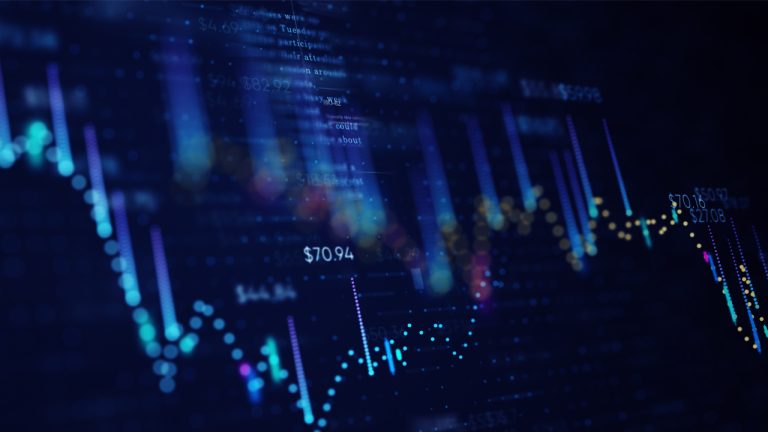A convergence of intuitive tools, new predictive techniques and hybrid cloud deployment models together makes predictive analytics and modeling more accessible than ever before.
Organizations of all sizes can have the tools to adopt predictive analytics into their business processes and to harness AI at scale. Enterprises today can derive value from previously unexplored “dark data” and this includes everything from raw text to geolocational information.
Table of Contents
What is predictive analytics?

The term predictive analytics refers to a range of advanced analytical techniques that analyze data to assess the likelihood of certain events taking place.
Using advanced statistical techniques, predictive analytics calculates the probability of a particular event taking place. The reliability of predictions depends on the predictive analytics model chosen and the quality of the data used.
Benefits of predictive analytics
Gartner reports that a significant percentage of organizations that invest in predictive analytics in supply chain achieve a high return on their investment. Let’s highlight other equally impressive benefits in the section below.
- Businesses gain a competitive advantage by analyzing internal data to better understand customer needs and behavior.
- Companies reduce costs by better understanding future demand and adjusting production and inventory accordingly.
- Banks and other financial institutions reduce fraud through predicting suspicious behavior.
- Retail outlets increase turnover through accurately predicting customer preferences and offering customer-specific services and products.
- All reduce risk through a better understanding of their business environment and those factors that could potentially impact the organization’s profitability.
How does predictive analytics work?

This analytics works on three pillars – Data preparation, analytical techniques and assumptions.
Data preparation: Much of the data available to organizations is unstructured and hence must be prepared. This includes cleaning up data to remove incorrect and garbled information as well as organizing the data in an appropriate format.
Analytical techniques: Commonly used analytical techniques include regression analysis and machine learning. With regression analysis, analysts try to identify which of the several independent variables are statistically correlated to an event. Machine learning takes this a step further. It uses various forms of decision-making techniques, such as neural networks, Naïve Bayes conditional probability rules and geospatial modeling to outline complex relationships.
Assumptions: All analyses are based on a certain level of assumptions that need to be relevant and correct. The importance of confirming that assumptions are correct cannot be overstated. For instance, the 2008 financial crisis and the last presidential elections where critical assumptions were misleading and incorrect lead to wrong predictions.
Developing predictive analytics models
Developing a predictive analytics model takes time and a certain degree of care.
Step 1: Identifying the problem
The first thing you need to get started is a problem to solve. What do you want to know about the future based on the past? What do you want to understand and predict? You’ll also want to consider what will be done with the predictions. What decisions will be driven by the insights? What actions will be taken?
Step 2: Preparing the data
Second, you’ll need data. In today’s world, this means data from a lot of places. Transactional systems, data collected by sensors, third-party information, call center notes, web logs, etc. You’ll need a to cleanse and prep the data for analysis. To prepare the data for a predictive modeling exercise also requires someone who understands both the data and the business problem. How you define your target is essential to how you can interpret the outcome. (Data preparation is considered one of the most time-consuming aspects of the analysis process. So be prepared for that)
Step 3: Building a model
After that, the predictive model building begins. Increasingly easy-to-use software means more people can build analytical models. Yet you’ll still likely need some sort of data analyst who can help you refine your models and come up with the best performer. And then you might need someone in IT who can help deploy your models. That means putting the models to work on your chosen data – and that’s where you get your results.
Step 4: Forming a team
Predictive modeling requires a team approach. You need people who understand the business problem to be solved. Someone who knows how to prepare data for analysis. Someone who can build and refine the models. Someone in IT to ensure that you have the right analytics infrastructure for model building and deployment. And an executive sponsor can help make your analytic hopes a reality.
Tools used for predictive analytics
Predictive Analytics Software Tools have advanced analytical capabilities like Text Analysis, Real-Time Analysis, Statistical Analysis, Data Mining, Machine Learning modeling and Optimization, and more.
Libraries for statistical modeling and analysis
- Scikit-learn
- Pandas
- Stats model
- NLTK (Natural Language Processing Tool Kit)
- GraphLab
- Neural Designer
Open-source analytical tools
- SAP Business Objects
- IBM SPSS
- Halo Business Intelligence
- Daiku-DSS
- Weka
- R-Studio(R-Programming used)- most demanding Statistical tools for Machine Learning
- Apache Mahout (easy integration with Hadoop)
- RapidMiner Studio
- H2O.ai
- Knime Analytics
- Statistica
- Orange
- Anaconda
Premium analytical tools
- Alteryx
- Data Robot Inc
- Altair
- Spotfire
- SAS
- Mini Tab
- Sisense
- IBM Watson
- Qlik Sense
- Board
- TIMi Suite
The hierarchy of analytics

It is essential to understand where predictive analytics fits into the hierarchy of data analytics.
The most basic form of analytics is descriptive analytics, which measures historical performance indicators such as sales and margins. The next type of analytics is diagnostic analytics, which analyzes reasons for past performance. These analytics measure past performance, while predictive analytics is used to determine future metrics, such as the probability of increasing sales.
Although descriptive and diagnostic information is important, as is knowing what’s likely to happen in the near future, what’s missing is the answer to the question, “What steps should I take now?”. This is where prescriptive analytics plays an integral role.
Using information derived from descriptive, diagnostic and predictive analytics, prescriptive analytics identifies which decisions are best in terms of achieving specific organizational goals.
Who is using predictive analytics?

Many organizations are using predictive analytics for better outcomes and reduce risk. A few examples below should be able to paint a clear picture of how different industries are exploiting the innumerable benefits of predictive analytics.
- Retailers use predictive analytics to understand customer preferences and implement strategies to encourage customer retention, increase sales and satisfy customers.
- Medical specialists use predictive analytics to determine patients who are at risk of developing diseases such as diabetes and asthma.
- Banks use analytics to evaluate credit risk to determine whether to extend or withdraw credit.
- Insurance companies use analytics to determine long-term insurance risks.
- Airlines use predictive analytics to determine aircraft maintenance requirements.
- Utilities vary electricity prices depending on demand forecasts.
- Manufacturers use predictive analytics to monitor supplier performance, predict maintenance requirements and optimize production capacity.
Is predictive analytics enough?

A significant drawback of predictive analytics tools is that they can’t inform managers of the right decisions; they only alert them to the fact that decisions are needed.
Other limitations include the risk of poor design and validation of models, which can result in incorrect predictions and financial loss. This may not be fit for purpose nor correctly reflect the organization’s environment.
The benefits of predictive analytics can be plagued by poor decision-making based on gut feel. In such situations, a prescriptive analytics solution may be a better answer because of its ability to determine the best decision in any circumstance.
It’s vital to have the right people on the team. If your organization doesn’t have people with the right predictive analytical design skills, we encourage you to consider working with a trusted vendor.
















